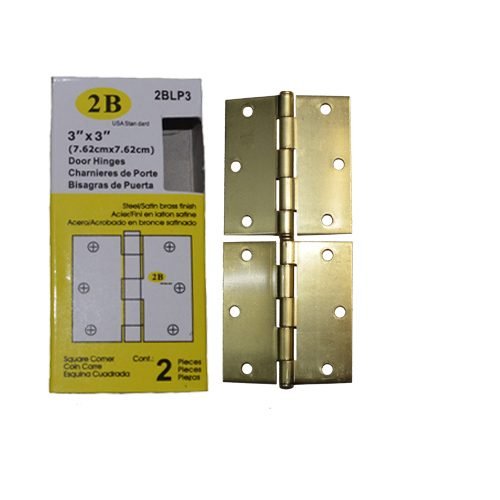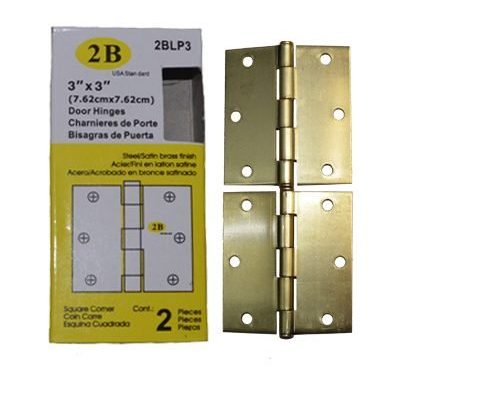
Imagine standing in your hallway, ready to step out the door, and each movement sends a little shudder throughout the house. That’s why addressing a loose hinge is essential. Not only does it help the door function properly, but it can also extend the life of your door and improve your home’s security. Whether you’re dealing with an interior door or an exterior one, this guide will help you tighten things up and get your doors swinging smoothly again.
Understanding Door Hinges and Their Components
Before we dive into the repair process, it’s helpful to understand the basic components of a door hinge. A hinge typically consists of two plates, known as leaves, that are attached to the door and the frame. These leaves are connected by a pin that allows them to rotate. When a hinge feels loose, there could be several reasons, including a worn-out pin, misaligned leaves, or damaged screw holes.
The Anatomy of a Hinge
– Leaves: These are the flat parts that mount to the door and frame.
– Pin: This is the central rod that holds the leaves together and allows the door to swing.
– Screws: These secure the hinge to the door and frame.
When a hinge is loose, it’s often due to the screws becoming loose over time or wear and tear on the pin itself. You might be wondering what the best approach to fixing it is, and I’ll break that down step by step.
Gathering Your Tools and Supplies
To get started with repairing a loose door hinge, you’ll need a few basic tools. Trust me, having everything on hand will make the process much smoother. Here’s what you should gather:
- Screwdriver: Make sure it matches the type of screws in your hinge (usually Phillips or flathead).
- Wooden dowel or toothpicks: These can help fill in stripped screw holes.
- Wood glue: This will hold the dowels in place for better stability.
- Replacement hinges (if necessary): If your hinges are beyond repair, this is a good alternative.
Once you have your tools ready, you’ll be set to tackle that loose hinge. It’s all about having the right items nearby so you don’t have to pause halfway through the fix.
Step-by-Step: Tightening the Loose Hinge
Here’s where the real work begins. Follow these steps to tighten your loose door hinge effectively.
1. Inspect the Hinge: Check the screws holding the hinge to both the door and the frame. If they are loose, simply tighten them with your screwdriver. Sometimes, this quick fix can work wonders!
2. Check the Pin: Open the door and observe the hinge closely. If the hinge pin is wobbly or feels loose, it might need to be replaced or reinforced.
3. Fill Stripped Holes: If the screw holes are stripped, take a wooden dowel or a few toothpicks, coat them lightly in wood glue, and insert them into the hole. Allow the glue to dry before proceeding. This makes the hole sturdy again.
4. Reinsert the Screws: Once the glue has dried, reinsert the screws tightly. If you need to, apply some pressure to get them seated properly.
5. Test the Door: Finally, open and close the door a few times to ensure everything is working smoothly. If it still feels loose, you might need to consider replacing the hinges.
When to Replace the Hinges
Sometimes, despite our best efforts, a loose hinge cannot be repaired. It might be time for a replacement. Here are a few signs that suggest it’s better to invest in new hinges:
– Visible Damage: If the hinges show signs of rust, cracks, or warping, it’s best to replace them.
– Frequent Loosening: If you find yourself tightening them repeatedly, it’s a sign they’ve worn out their welcome.
– Misalignment: If the door doesn’t line up properly even with adjustments, new hinges may resolve the issue.
Replacing hinges is relatively simple and can ensure your door functions properly for years to come. Just make sure to choose hinges that match your door’s size and weight.
Maintenance Tips for Long-Lasting Hinges
After you’ve repaired or replaced your door hinge, it’s essential to keep it well-maintained. Here are some tips to extend the life of your hinges:
– Regular Lubrication: Apply a small amount of lubricant to the hinge pin a couple of times a year. This keeps it moving smoothly and reduces wear.
– Keep Them Clean: Dust and grime can build up over time. Wipe the hinges down with a damp cloth to keep them clean.
– Check for Looseness: Make it a habit to check your door hinges regularly. Catching a problem early can save you time and effort down the road.
Taking these steps can help prevent issues and ensure your doors swing quietly and securely.
Repairing a door hinge that feels loose on the pin might seem daunting, but with a few tools and some simple steps, you can have your door functioning like new in no time. Remember, whether you’re tightening screws, filling stripped holes, or replacing hinges entirely, the goal is to restore that smooth swing.
By understanding your door’s hinges and implementing regular maintenance, you’ll keep doors operating efficiently and prevent future problems. So grab your tools, and let’s get those doors swinging smoothly again!
